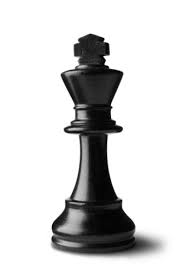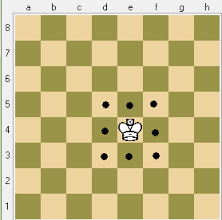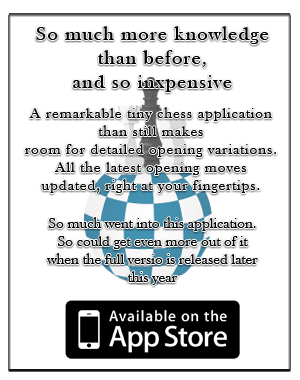KING
 The most important piece, but not the most powerful. The king is shown by the character K. It can be played to any of the adjacent squares horizontally, vertically or diagonally. The king may not be moved to a square where it finds itself under check.
The most important piece, but not the most powerful. The king is shown by the character K. It can be played to any of the adjacent squares horizontally, vertically or diagonally. The king may not be moved to a square where it finds itself under check.
Meeting the certain conditions once during the game, players have the right for castling, a combined move of the king and one of the rooks. This move originated from the king’s leap, a move introduced in Italy in the 13th century.
In the initial position, each player has one king placed on e1 and e8 for white and black respectively. Unlike other pieces, the king can never be captured.
The game is won if the player checkmates the opponent’s king, or drawn if the opponent’s king is stalemated.
In the opening and in the middle game players usually strive to protect the king, but in the endgame with a lesser number of pieces on the board, the tactical role of the king grows and can often become decisive.
The name of the King in other languages: Shah, Konge, Koning, Roi, Köning Kiróly, Shah, Re, Konge, Rey, Kung.




